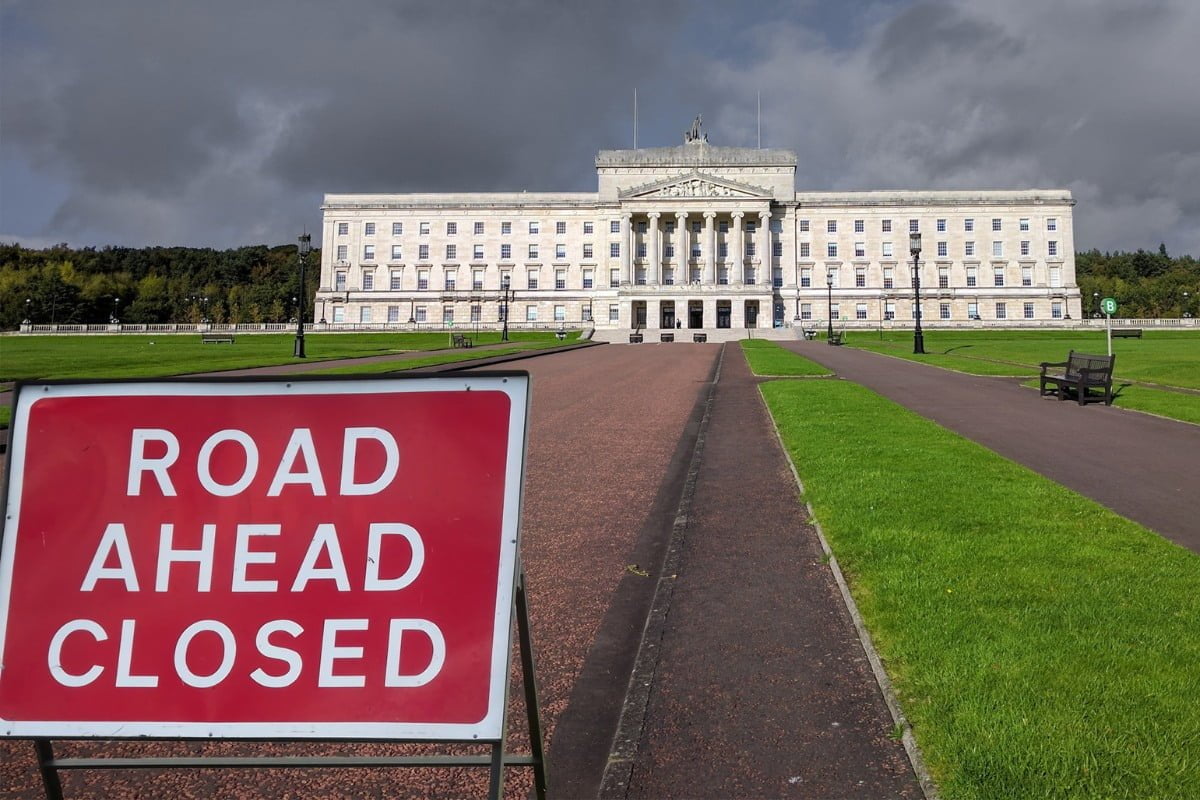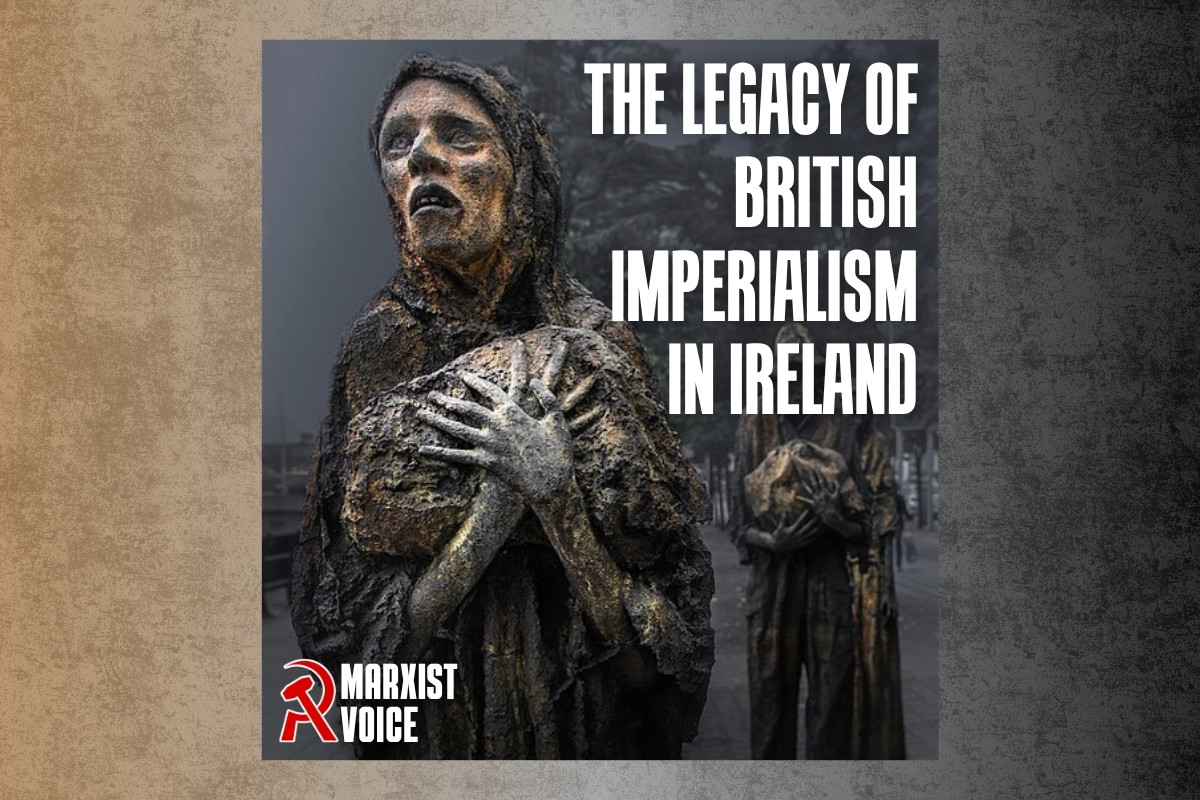Twenty-five years ago this week, the Good Friday Agreement (GFA) was signed in Belfast.
Heralding it as nothing less than the beginning of a new epoch for the North of Ireland, the British and Irish government signatories – along with its American architects – were inebriated with their own ‘success’. ‘History’ had been made!
The very day after its signing, on 11 April, the mouthpiece of Irish bourgeois society – The Irish Times – put it in no uncertain terms:
“Where the inherited historic icons were the rebels of 1916 […] those of the coming times will be the peacemakers who buried the quarrel of 400 years inside the grey, prefabricated huts of the Castle Buildings at Stormont.”
Finally! After some long and dark 400 years, everything has been solved for Ireland.
And yet history has been cruel to our modern-day ‘historic icons’ who ‘buried the quarrel of 400 years’. ‘New’ Labour Prime Minister Tony Blair has entered the history books as a war criminal, and Fianna Fáil Taoiseach Bertie Ahern as the head honcho of the den of corrupt thieves that was his government.
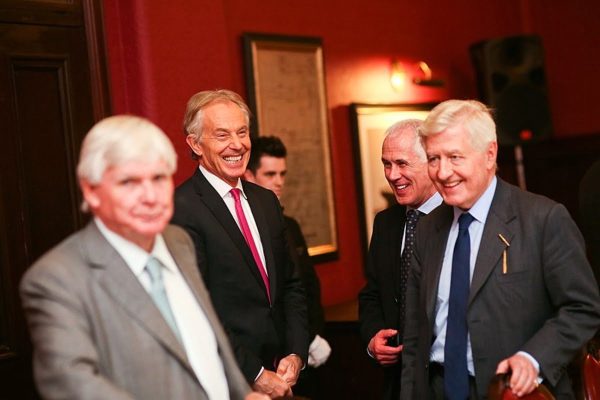
Has anyone yet put posters of these icons up on their wall, right next to James Connolly?
Today, one can hardly believe that such words were ever uttered by someone living on this planet. Twenty-five years on, hardly a stone remains standing of the GFA and all the promises made.
‘Peace dividend’
Of the much vaunted ‘peace dividends’, working-class communities around the Six Counties have nothing to show.
If anything, on the back of the terminal crisis of British capitalism, they are poorer now than ever before. The North is one of the most deprived areas of Northern Europe – with persistently high rates of ‘economically inactive’ people and services stripped to the very bone.
The little money that has flown into the region has gone straight into the pockets of landlords, bosses and of the upper layers of the middle classes.
The acute crisis of the NHS. Unemployment. Industry dismantled.
Education in the North of Ireland sees spending per pupil almost 20 percent lower than in England, with massive cuts on the agenda this year. 10 percent of young people leave school with no qualifications.
Or we can look at the difference between any workers’ neighbourhood in Belfast and the ‘revitalised’ city centre, with its selection of fine restaurants and luxury hotels. As one commentator recently put it in the Financial Times: “It’s a mile away, but it may just as well be a different planet.”
And to be sure, the working class has been left in the same state as it was found in 1998.
Stormont
But, perhaps the most clear illustration of the GFA’s failures is the circus of its political institutions – the Stormont Assembly. Mired in scandals and constantly paralysed, Stormont has been shut for almost half of its existence since 1998.
Even in its ‘best’ days, the devolved assembly has proved to be little more than a glorified local council, with the single job of administering Westminster rule in the North. It is ‘direct rule’ with a middleman.
Consecutive Unionist-Nationalist coalitions have implemented the harshest austerity measures contained in the Tory-allocated budgets. Services and welfare provisions have been utterly destroyed – most recently, with the criminal removal of ‘holiday hunger’ payments for heavily deprived children, just a few days before Easter.
To crown it all, while paying lip service to the wonders of the GFA, Sunak’s government has just last week issued a not-so-veiled threat to again impose direct rule from London, if Stormont fails to get back on its feet soon. This would amount to effectively scrapping the GFA and an admission of the whole project’s failure.
No wonder a poll last year found that almost three in four people have grown disillusioned with the Assembly.
But the crisis at Stormont is nothing more than a reflection of the crisis of capitalism at large, and of the wounds kept alive by partition. The GFA hoped to conceal these with a sticking plaster. But beneath, they have continued to fester over the decades.
On this day, the 23rd anniversary of the Good Friday/Belfast Agreement, we remember all that has been achieved & all that can still be achieved as we honour its principles – peace, consent, respect for different identities, change by democratic means only, co-operation N/S & E/W pic.twitter.com/LjBKGjKBA2
— Leo Varadkar (@LeoVaradkar) April 10, 2021
Sectarianism
Sectarianism is of course anything but gone. In fact, all the GFA did was to hard code it into the region’s political setup – forcing parties to identify as ‘nationalist’ and ‘unionist’, and then bringing all the parties together into one, grand, mandatory coalition.
In terms of gross statistics, little has changed since 1998. A whopping 93 percent of children still attend segregated schools. 83 percent of people date strictly from within the same community. The overwhelming majority still decide where to shop based not on convenience, but on sectarian ‘geography’.
In 2005, an estimated 1,400 people were forced to move house as a consequence of sectarian intimidation. Even as late as last year, a couple was forced out of their East Belfast home after being seen with a hurling stick. Just a few days ago, three teenagers were brutally attacked in Belfast city centre by two middle-aged men for identifying as Catholics. A primary school was threatened with being firebombed for planning to host a GAA [Gaelic Athletic Association] taster event.
These are just a few of the episodes that make the news. And every July, Eleventh Night bonfires decked with Irish tricolours and racist statements tower higher and higher.
Whilst the Provisional IRA called a ceasefire in 1994, and decommissioned their weapons in 2005, the loyalist paramilitary groups never reciprocated. Their stranglehold over many communities – which they blight with drug dealing and other anti-social behaviour – is in many instances stronger than ever, as the recent armed feuding that has blown up between loyalist factions in Newtownards demonstrates.
An estimated 12,500 are still organised between the various loyalist paramilitary groups. To put the figure into perspective, the whole regular army of the South has just 8,000 members.
In referenda, the GFA was ratified by a big majority of the electorate, who earnestly desired an end to the violence. But the promises made by politicians that this Agreement would end sectarian violence have ended in bitter disappointment.
Sectarianism, that poisonous legacy of Britain’s centuries-old policy of divide and rule, still leeches off the anger and despair in depressed working-class communities, distorted beyond recognition by demagogues. Unionist politicians pander to it to shore up their careers. And is fed by the spiralling crisis of British capitalism.
It continues to hang like a Sword of Damocles over the region, capable of flaring up with disastrous results.
Which way forward?
Although the picture painted looks quite bleak, the reality is that the majority of people, along with the overwhelming majority of the youth, are sick to the stomach of the hostile status quo, with its poverty, violence, and sectarian division.
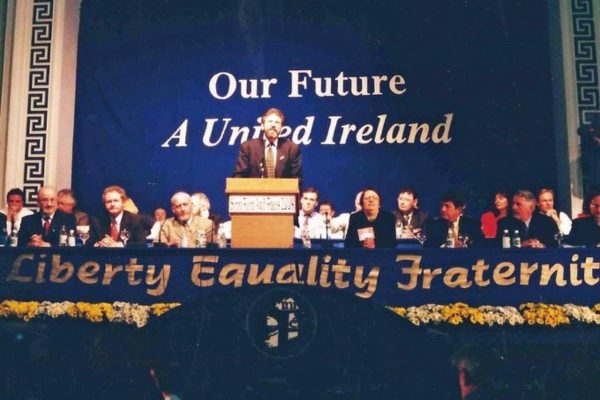
The overwhelming majority simply want to have a peaceful and dignified existence. One where you can apply for a job without worrying that the school listed on your CV will give away your religion and ruin your chances. One where everyone is, in fact, guaranteed a job. One where you could just play whatever sport you like without risking getting viciously beaten up for it.
It is this feeling that was cynically played upon by Irish, Americans, and especially British politicians 25 years ago.
Having created the monster of sectarianism in the first place, whipped up bigotry and pogroms, and pushed the region over and over again towards conflict, in order to defend their cynical interests – after all this, they had the cheek to present themselves as its peace-loving saviours!
In the referendum 25 years ago, the GFA was overwhelmingly welcomed, and naturally so. Having to choose between the status quo, and the status quo with the promise of less violence, who would go for the former?
Almost three decades of armed struggle had, after all, failed to move the British even a single inch; nor did it win a single concession from Westminster.
Indeed, the GFA is almost a carbon copy of the Sunningdale agreement, first put on the table 25 years earlier. Its signing was an admission on the part of Sinn Féin and the Provo leadership that they could not win by arms alone.
At the same time, it was an admission on the part of the British ruling class that they could not crush the fighting spirit of the nationalist community, and that they would have to co-opt a section of the republican leadership into their political machinations to gain acquiescence.
The GFA represented the institutionalisation of this stalemate into the political setup of the North. Of course, it did not solve the underlying problems – nor was it designed to.
It was on this ground that the Marxists rejected the GFA at the time. And we believe that twenty-five years have proved the Marxists right.
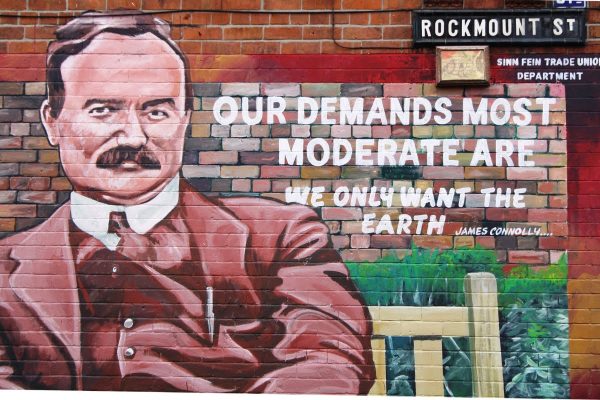
Sinn Féin’s presence in Stormont has not induced British imperialism to move a single inch either. The existing setup maintains the Unionist veto of legislation. The constitutional arrangements of the GFA guarantee Sinn Féin, “the right to seek constitutional change by peaceful and legitimate means” – but the right to effect constitutional change is reserved wholly by Westminster.
Despite Sinn Féin being the most voted party North and South, on the basis of reformism, a United Ireland seems as far away as it has ever been.
What is necessary is to go back to the ideas of the great Marxist revolutionary James Connolly.
The sectarian divide can be buried once and for all only on the basis of common class struggle. Unity can only be forged in action, fighting against the common enemy of all the workers in the North, in the South, across the Irish Sea, and everywhere around the world: the capitalist class.
The republic Connolly fought for is the Workers’ Republic, in which the means of producing goods and services, and the land, are owned and democratically-managed by the working class.
The task in front of us is that of overthrowing capitalism and fighting for a Socialist United Ireland, and for world revolution. Only on this basis will we be able to win a dignified existence for every single worker and young person living in Ireland.
The Irish Marxists are fighting toward this goal under the revolutionary banner of James Connolly. Join us in this fight!

